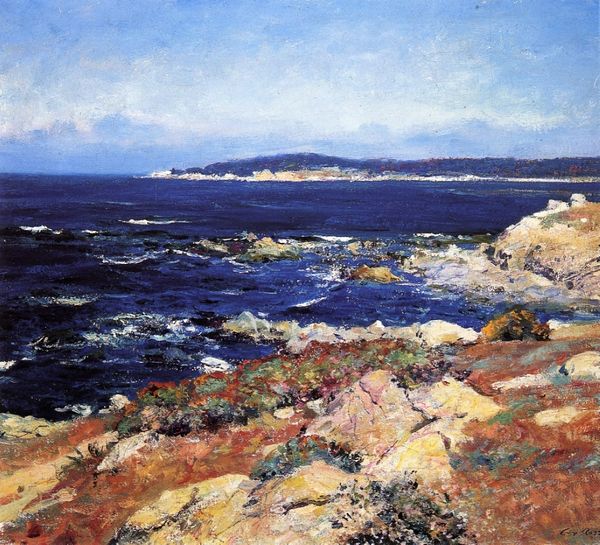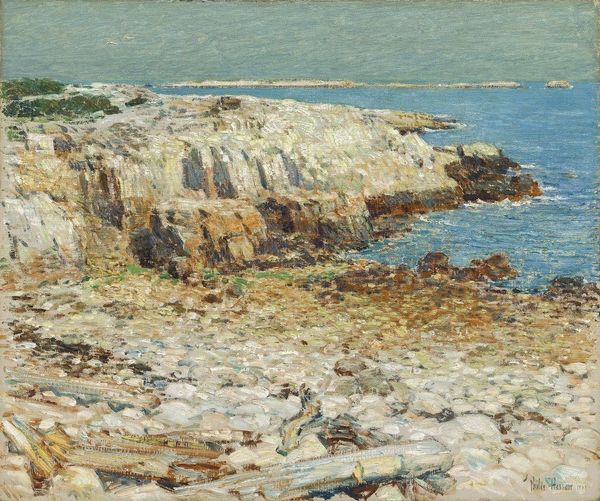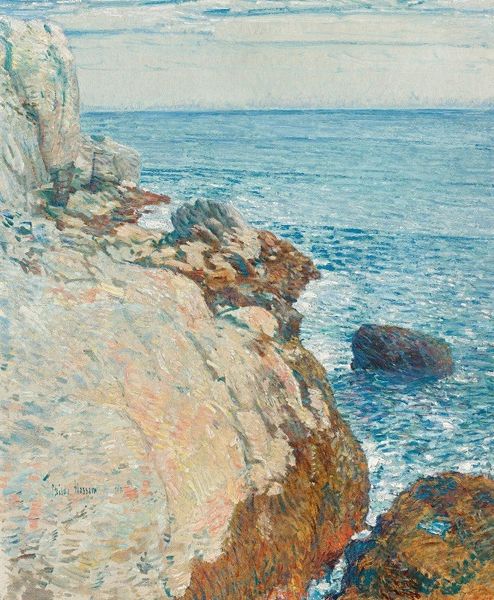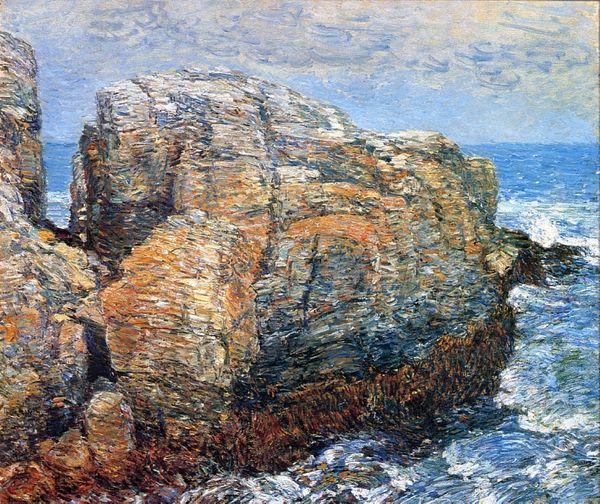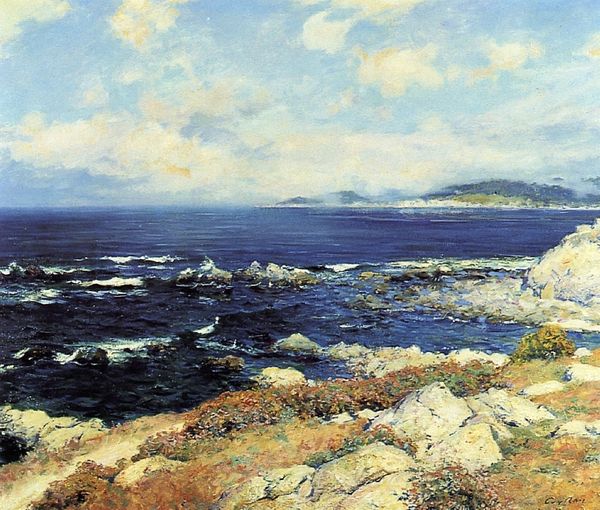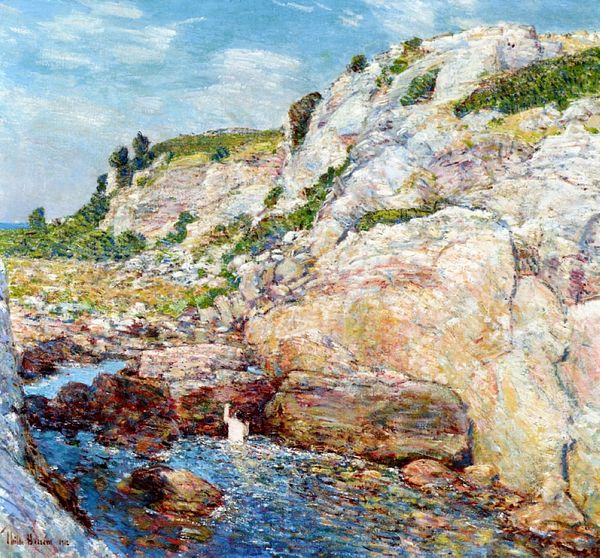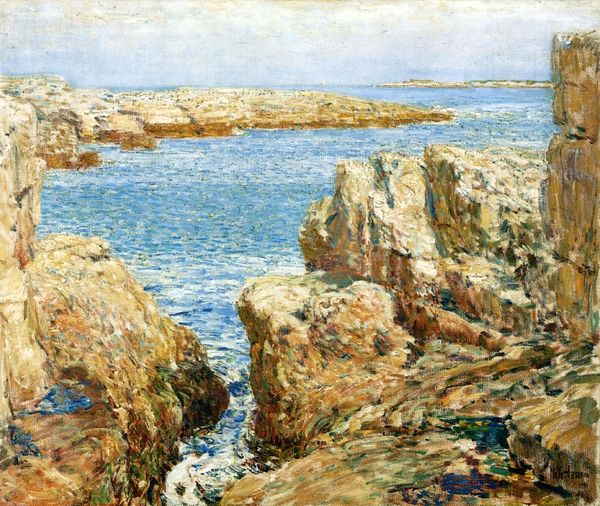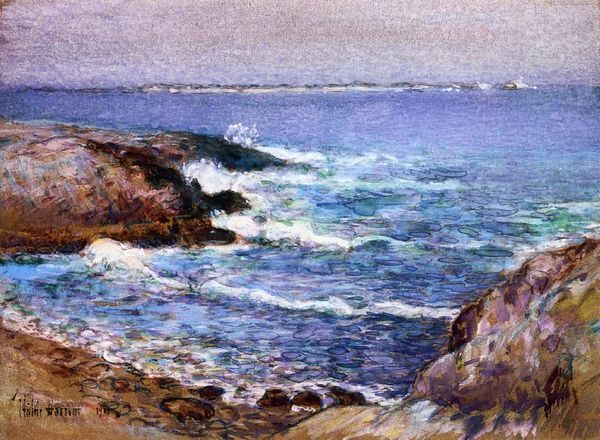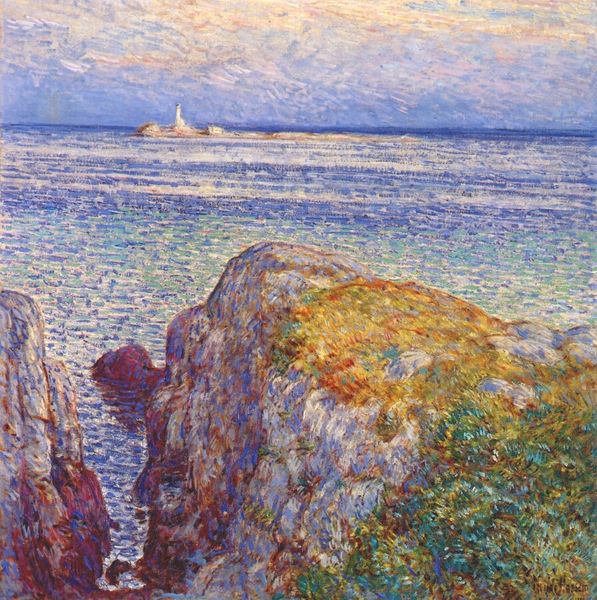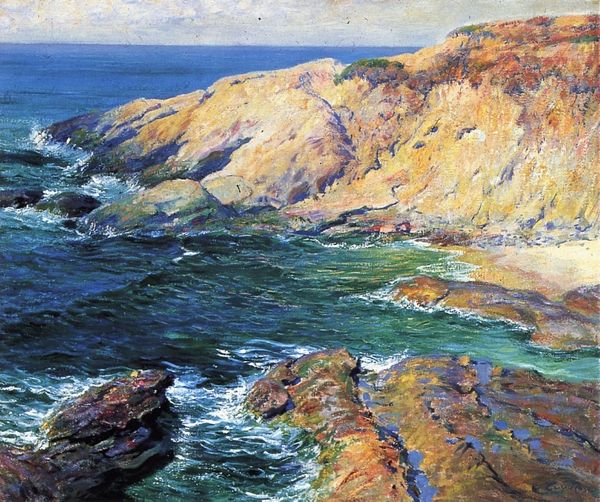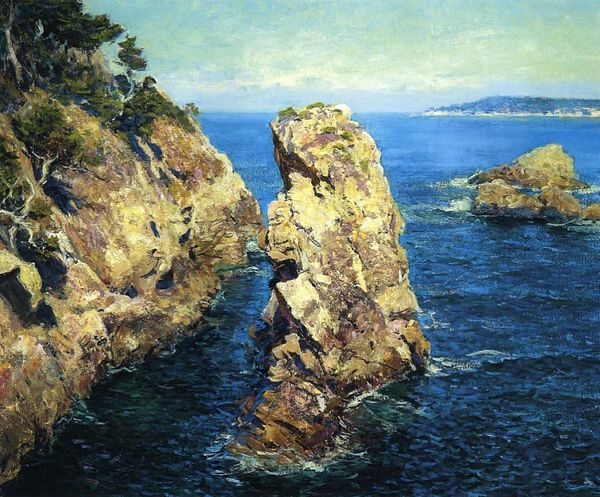
Copyright: Public domain
Editor: This is Childe Hassam’s "Northeast Headlands, Appledore," painted in 1909 using oil paint. It feels so grounded and solid. What strikes you most about its composition? Curator: The arrangement of the forms is masterful. Note how the jagged edge of the cliff dominates the foreground, pulling the viewer in. The building at the top left acts as a counterpoint, but does not detract from the organic forms in the centre of the work. How would you characterize his brushstroke? Editor: Broken and textured, definitely impressionistic! It really captures the light reflecting off the rocks and water. Curator: Precisely. Observe the juxtaposition of short, staccato strokes with broader washes of color. Hassam's manipulation of the oil paint medium achieves an incredible visual effect, almost dissolving form into light. And notice his use of complementary colors – the blues of the sea against the oranges and yellows of the rocks. This strengthens the pictorial structure. Editor: So, the appeal lies not just in what it represents, but how it's constructed as a visual object? Curator: Exactly! We must consider the aesthetic language the artist uses. How do line, color, texture and form interact to create a unified whole? Hassam gives us a powerful demonstration of pure aesthetic pleasure independent of narrative content. It's about seeing, experiencing, and analyzing. Editor: I can see that now. The visual language is so carefully considered. It’s made me reconsider how I interpret paintings; thank you! Curator: My pleasure. Considering its form, "Northeast Headlands, Appledore" delivers a compelling lesson in how to engage with the material qualities of art.
Comments
No comments
Be the first to comment and join the conversation on the ultimate creative platform.

